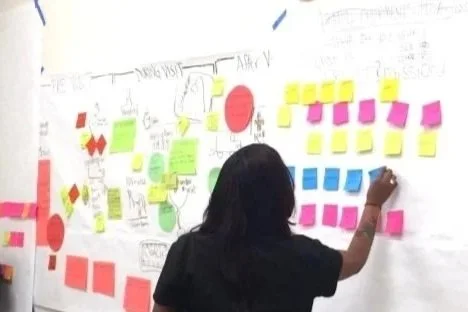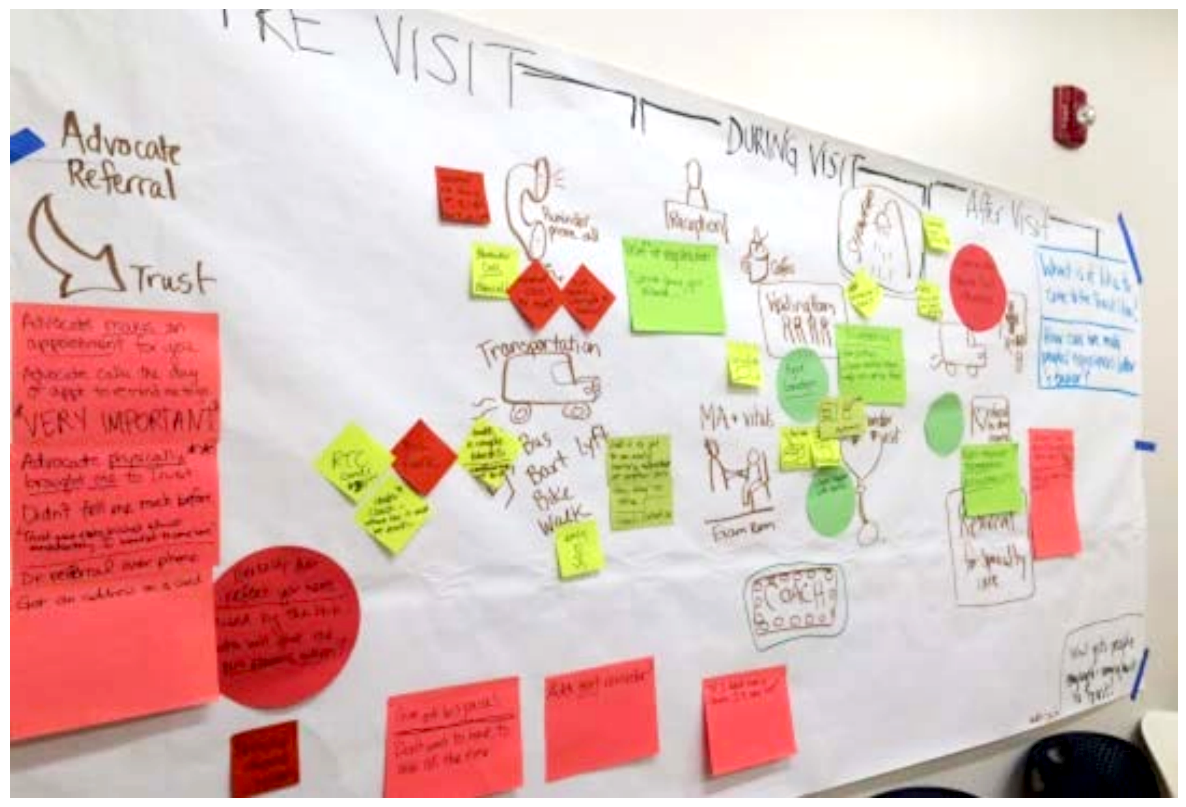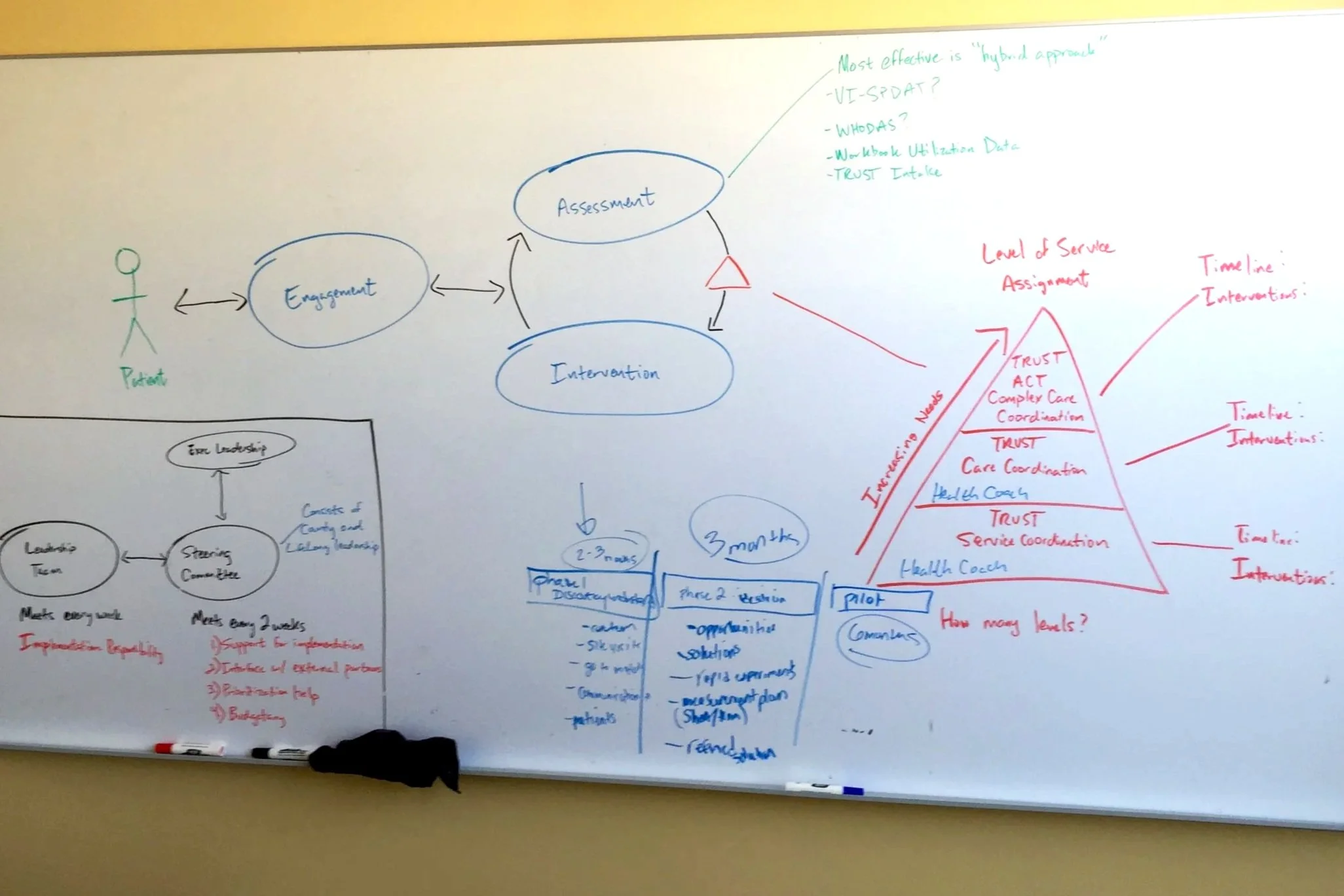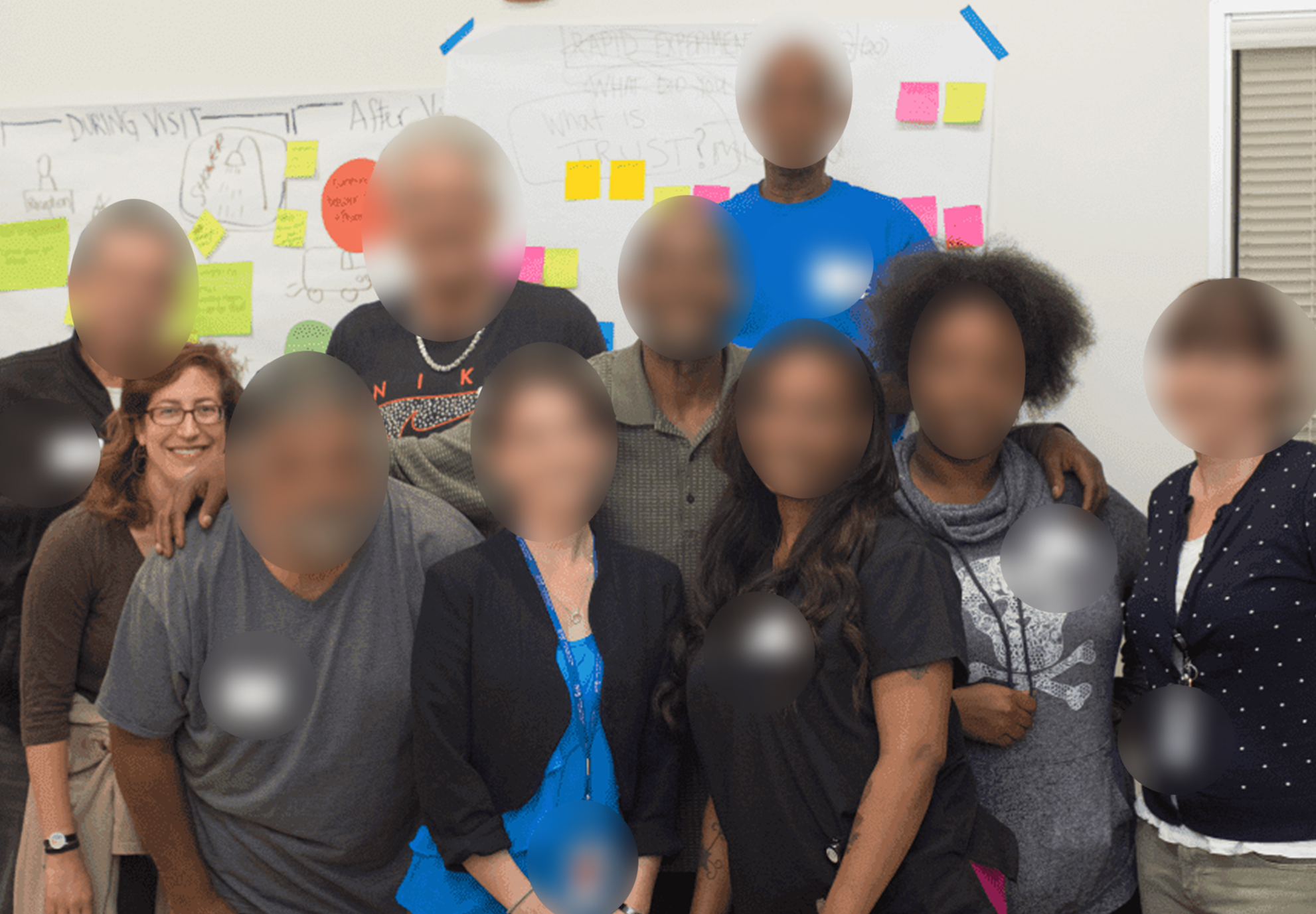Community Co-Design
Co-creating a clinic worthy of the unhoused community’s trust
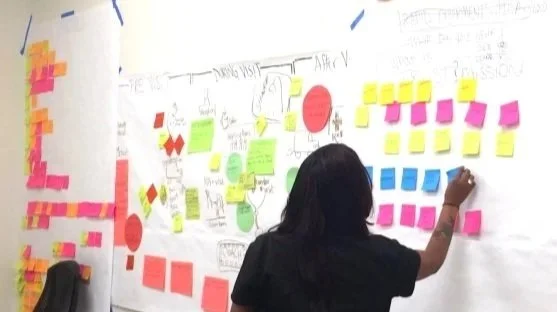
“…I would stick out like a sore thumb. So that made it hard to go there…
You deal with so much disrespect from the public.”
Summary and Impact
The county just opened a health center to cater to the medical and social needs of people who’ve been unhoused. For five years as a program innovation partner and then volunteer, I supported the clinical and operations teams to co-create a clinic experience where patients were “accepted, welcomed, and valued by people who know them.” Learn more about TRUST Clinic.
Write-up by the California Health Care Foundation
I worked alongside TRUST staff and patients on patient experience, operational process design, and shared governance efforts in their delivery model:
Organized all-staff trainings in participatory design methods that staff then applied in real time to their work.
Co-facilitated interactive activities with staff and TRUST Partners to draft the clinic’s mission statement, prioritize and test new service offerings, and share stories about the impact of new services and business processes.
Helped operational leadership manage, facilitate, and secure lunch donations for the monthly TRUST Partner advisory meetings. As TRUST Partner membership matured, they built the confidence to facilitate TRUST Partner meetings themselves.
Through a co-design process engaging patients and all staff, TRUST piloted and implemented many offerings:
Launched a patient-run barbershop, smoking cessation, and wellness group classes.
Created a front door concierge position to warmly welcome patients and help deescalate incidents.
Offered ride share services to make it easier for patients to attend specialty appointments.
Extended access to popular services, like showers and acupuncture.
Added comfortable seating, calming decor, respectful clinic rules, and a patient suggestion box to the waiting room.
End-of-year reflection activity, where staff and Trust Partners shared vignettes about their experience designing the clinic experience at TRUST
“The structure that CCI shared with us and having a way to bring in everyone’s views, not just patients but all of the staff…Having them feel like they are part of the process [has been] really valuable.”
“Before coming [to TRUST], I had lived in my car for 10 years. Now I have my own apartment.”
My Contributions
Co-Design Facilitation
I created a giant journey map of the visit experience, listing out existing services. Patients and staff reviewed it and pointed out highlights and pain points in the end-to-end experience with the newly created clinic.
We learned that shower access was incredibly important. Bus vouchers were less valued, as the bus could be unreliable and put them at risk of being late for an appointment. This led to increasing the shower hours and starting the ride share pilot for high-cost specialty appointments
Before, during, and after-visit journey feedback, plus brainstorming new ideas
Along with our innovation director, we trained all clinic staff in participatory design methods that we put to practice over the course of the next year. To expand their thinking, we coordinated “field trips” where staff visited other organizations serving similar populations. Staff at all positional levels attended site visits and shared back what they learned with the full team.
Human-centered design and innovation training session
TRUST Partners collaborative session
Sharing takeaways from field trips
Defining themes from research and testing ideas
Medical director workshopping potential care delivery models
At the end of the clinic’s first year of operation, I led a reflection activity where staff and Trust Partners shared stories about the clinic’s evolution. They talked about what they learned from working in a different way than they normally do in a clinic setting. There was a lot of joy and less hierarchy than is typical in medical settings.
First-year timeline, including hand drawings and notes from staff and clients
The “OG” TRUST Partners and staff. We spent a lot of time in this room!
When my official partnership ended and I became a volunteer, I continued to help the clinic operations director plan and facilitate monthly meetings with the TRUST Partners. Since I worked around the corner, I’d run into members on the street, and we’d share a smile or a hug.
TRUST Partner meetings continued during the pandemic, providing patients a venue for advocacy. They voiced the need for a timely re-opening of the clinic so they could access key services, like the shower. And they made sure that there was enough sufficient outdoor seating for people who had to queue outside when visitation was limited.
They remain an important voice keeping the clinic accountable as it’s grown to serve more than 3,000 patients.
Lessons
Since staff burnout and patient turnover can be common when working with patients with complex needs, onboarding systems are key. Provide context to new staff regarding innovative organizational practices, and get them invested in the culture and processes you worked so hard to build.
Find ways to make it accessible for patients to give staff feedback. Document spoken feedback; offer food, transportation, and give cards; or meet remotely to make it easier for folks to participate.



